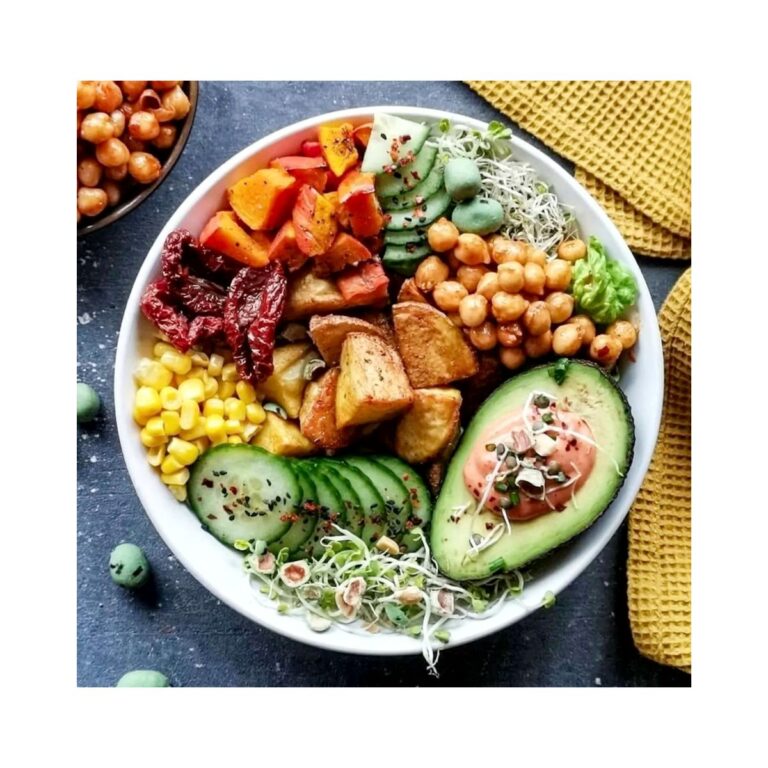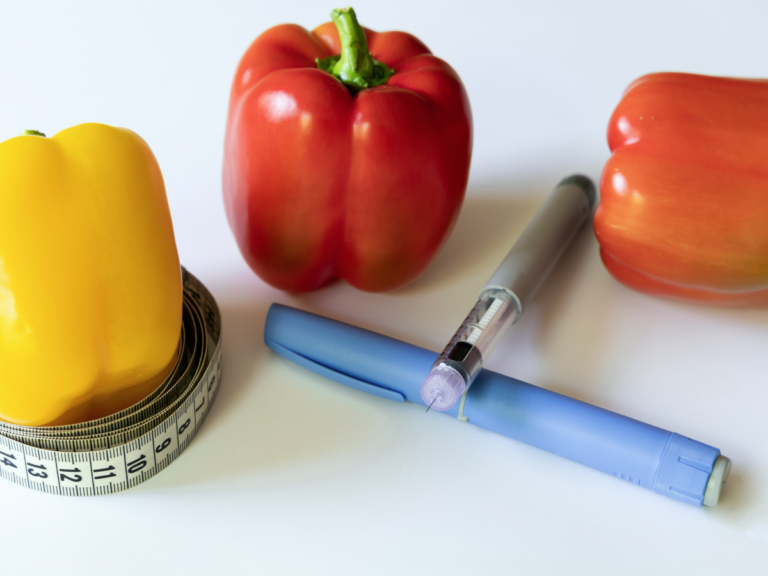If you have recently started taking Ozempic®or Wegovy® (semaglutide), a once-weekly prescription medication, you may be wondering what type of semaglutide diet plan you should follow. Using a diet plan can help make sure that you stay on track while using your new weight loss tool.
Table of contents

1. WHAT IS SEMAGLUTIDE?
Semaglutide, sold under the brand name Ozempic, is FDA-approved for the treatment of type 2 diabetes, and Wegovy, also, semaglutide is FDA-approved for weight loss.
2. HOW DOES SEMAGLUTIDE WORK?
Your body naturally produces an appetite hormone known as glucagon-like peptide-1 (GLP-1) that helps to regulate your hunger. Specifically, Semaglutide is a type of drug called a glucagon-like peptide-1 (GLP-1) receptor agonist. Wegovy is the first medication in the GLP-1 receptor agonist drug class. Semaglutide works like GLP-1 by regulating your appetite, which can lead to eating fewer calories and losing weight.
2.1 Understanding Semaglutide
Semaglutide is made up of amino acids that decrease blood sugar levels and regulate insulin. The injectable drug also mimics a hormone called glucagon-like peptide-1 that we naturally produce in our intestines. When you inject it, semaglutide suppresses your appetite and makes you feel fuller faster. Patients also report that along with a reduction of appetite, “food noise” is also reduced.
Ozempic and Wegovy are two different semaglutide treatments currently available. Ozempic and Wegovy are both non-stimulating and non-habit-forming. The FDA has approved Ozempic for individuals with Type 2 diabetes to improve their blood sugar control. Wegovy, on the other hand, is FDA-approved for weight loss for individuals with obesity or excess weight and at least one co-morbidity (weight-related condition).
When a healthcare provider prescribes semaglutide medications, patients inject themselves with the medication once a week. At the start of treatment, individuals take a monthly dose of 0.25mg. Then, the amount increases to 2.4mg depending on how much weight the individual desires to lose.
According to the results of clinical trials, it is possible to lose up to 20 lbs. with semaglutide. On average, people can lose approximately 4% of weight in 12 weeks by taking a 1-mg dose of semaglutide, and weight loss of approximately 5% for people taking a 2.4-mg dose. Over a period of 26-30 weeks, average weight loss is 15-20 pounds. As always, individual results will vary per person.*
Semaglutide works best when paired with a healthy diet and permanent lifestyle changes. Regular physical activity and portion control are essential for managing your weight. Additionally, it is important to consume nutrient-dense foods to support semaglutide’s effectiveness.
Disclaimer: This should not be taken as medical advice. This is my opinion as a registered dietitian nutritionist.

3. WHAT IS THE BEST DIET PLAN FOR SEMAGLUTIDE
The “best” diet plan is one you can follow. Indeed, considerable research shows that diets don’t work. But, sticking with a reduced-calorie meal plan can be easier when you have a tool like semaglutide in your toolbox. The key is to use the tool to help create new healthful habits that lead to long-lasting lifestyle changes. We will talk more about how to build a healthy plate shortly.
3.1 HOW MANY CALORIES DO I NEED?
Caloric needs can be analyzed using a machine called an indirect calorimeter machine. Presently, access to a machine like this is limited due to cost and time so registered dietitians often use equations like the Harris-Benedict Equation or Mifflin St. Jeor equation to estimate your caloric needs based on height, weight, age, and activity level.

4. WHAT TO EAT WHILE TAKING SEMAGLUTIDE
When taking semaglutide for Type 2 diabetes or weight loss, it is important to modify your diet and lifestyle to get the most out of semaglutide and stay healthy. While taking semaglutide, side effects like bloating, stomach pain, and nausea are possible. To avoid some of the common side effects, it is recommended to consume a balanced diet and avoid certain foods particularly those that are high in sugar and/or fat.
Additionally, it is important to be mindful of your appetite and refrain from overeating when you feel full. By following a balanced, whole-foods diet and incorporating the foods below, you are more likely to maximize your results with semaglutide.
4.1 Eat Lean Protein at Every Meal
Adding protein to a meal will help reduce blood sugar spikes post-meal and enhance your feeling of fullness, which prevents overeating. Protein should make up 10 to 35% of your total daily calorie intake for the day. A good guideline is to fill ¼ of your plate with protein. Incorporating lean proteins such as skinless chicken breast, white fish, lean meat, or plant proteins is a good way to get your protein in and feel fuller longer. These types of foods are low in saturated fat and calories, which can help you lose weight.
4.1.1 PROTEIN FIRST
While on semaglutide, your appetite will be lower, YAY! However, because of your decreased appetite, the quality of food that you eat is that much more important. I suggest eating protein first because the body cannot store amino acids, you need to replenish them regularly. After protein, adding whole foods like non-starchy vegetables will help round out your meals.
Proteins are made up of a combination of molecules called amino acids — your body needs 20 different amino acids to function correctly. It can produce 11 of them, but it must get the final nine — called essential amino acids — from the protein you eat.
4.1.2 HOW MUCH PROTEIN DO I NEED ON A SEMAGLUTIDE DIET?
The amount of protein to eat at each meal isn’t the same for everyone. In general, a good general rule of thumb is to aim for about 25 to 30 grams per meal and at least 8-10 grams per snack. Here is a list of high-protein snacks for some ideas. Visit a registered dietitian to determine your individual protein needs.
4.1.3 HOW CAN I EAT MORE PROTEIN?
A healthy and balanced diet typically provides all the amino acids your body needs, that is to say, eating protein with every meal and snack will likely allow you to meet protein goals as part of a semaglutide diet plan. Complete proteins — which contain all nine essential amino acids in equal amounts — provide the most bang for your buck.
Complete proteins contain all nine essential amino acids. To summarize, the following foods contain complete proteins:
- Beef
- Turkey
- Chicken
- Fish
- Eggs
- Dairy
- Soy
- Buckwheat
- Hempseed
- Quinoa
If you’re a vegetarian or vegan, or if you limit the amount of animal products you consume, you can combine incomplete, plant-based proteins to meet your body’s needs. Combinations include:
- Nuts or seeds with whole grains (peanut butter on whole wheat toast)
- Whole grains with beans (beans and rice; hummus and pita bread; bean-based chili and crackers; refried beans and tortillas)
- Beans with nuts or seeds (salad with chickpeas and sunflower seeds)
Look for easy ways to add or substitute complete proteins into what you already eat. Swap rice for quinoa, include edamame in salads, or add chia seeds or Greek yogurt to smoothies
4.2 Prioritize Complex Carbohydrates
Complex carbohydrates, like brown rice, quinoa, and whole wheat pasta, are high in fiber, digested, and absorbed more slowly into the bloodstream than their refined carbohydrate counterparts. As a result, this produces a slower, lower rise in blood sugar levels and can help you feel full for longer. Aim to fill ¼ of your plate with complex carbohydrates. Doing so is a great way to maximize your results when taking semaglutide.
4.3 Consume More Fruits and Vegetables
Eating a diet rich in fruits and vegetables can help you consume fewer calories and get more vitamins, minerals, and fiber. Fiber helps slow the breakdown and absorption of carbohydrates in your bloodstream. Nutrient-rich fruits and veggies can boost satiety, making you feel fuller. Try to fill half your plate with vegetables and fruits. Opt for low-glycemic fruits and veggies like greens, lentils, chickpeas, grapefruit, and berries.
4.4 Snack on Seeds and Nuts
Seeds and nuts are full of healthy fats, protein, and fiber. Snacking on pumpkin seeds, walnuts, or hemp seeds while taking semaglutide can help you feel more satisfied, which can help maximize your weight loss efforts. Nuts and seeds are also high in essential minerals like zinc and magnesium, which boost energy and support a strong immune system.
4.5 Stay Well Hydrated
Staying hydrated is important when taking semaglutide. Your small and large intestines help absorb water from your food. Therefore, the longer gastric emptying takes, the drier your solid waste will be. Dry, hard stools are uncomfortable and difficult to pass. Drinking plenty of water is a great way to prevent constipation while taking semaglutide. A general guideline is to consume 30 mL of fluids per kilogram of body weight, or about 0.5 oz/lb of your body weight.
5. WHAT NOT TO EAT WHILE TAKING SEMAGLUTIDE
No foods are completely off limits when taking semaglutide. However, some foods should be reduced or avoided altogether if possible. This is because certain foods can increase semaglutide side effects such as bloating, nausea, and abdominal cramping. Additionally, foods high in saturated fat can contribute to weight gain. Limiting the following foods below reduces the chances of increasing side effects that you experience with semaglutide.
5.1 Sugary Foods
If you’re taking semaglutide, being mindful of your sugar intake is a good idea. You should limit sugary foods like candy, soda, and baked goods from your diet. These types of sweets can cause your blood sugar to spike, which makes losing weight even harder.
5.2 Refined Carbohydrates
Refined carbohydrates like white bread, pasta, and processed cereals do not have fiber. Dietary fiber is linked to a host of health benefits, yet most refined grain foods and products are low in fiber. It is important to keep in mind that not all whole grains are rich in fiber, so eating a variety of whole grains is best. Farro, bulgur and Kamut are great examples of fiber-rich whole grains.
5.3 Fried Foods
Fried foods like cheeseburgers, fried chicken and french fries are high in calories and unhealthy fats. These foods can cause indigestion, bloating, gas, and stomach cramps. Aim to swap fried food for grilled or baked alternatives to cut down on excess calories, fats, and sodium.
5.4 Soda and Carbonated Drinks
It is also a good idea to avoid drinking soda and carbonated beverages when taking semaglutide. Like sugary sweets, sodas are high in sugar and calories and will spike your blood sugar levels. Soda lacks nutritional value and can contribute to weight gain.
Additionally, carbonated drinks like soda, seltzer water and beer contain carbon dioxide. This may exacerbate some of the side effects of semaglutide, including bloating or indigestion.
5.5 Alcohol and Caffeine
It is important to limit your alcohol and caffeine intake while taking semaglutide. Alcohol can contribute to weight gain because it is full of excess, empty calories. Drinking alcohol can also lead to dehydration and disrupt sleep, making losing weight more challenging. Additionally, drinking alcohol while taking semaglutide may increase your risk of experiencing nausea and vomiting and can lower your blood sugar levels. Therefore, it is wise to limit alcohol and caffeine consumption to get the most out of semaglutide.
6. SEMAGLUTIDE DIET PLAN SUPPORT
If you are looking for support and answers to your questions and would like access to a registered dietitian, join our private Facebook group at Wegovy / Ozempic Meal Plans and Recipes.
Need some help starting a semaglutide diet plan for weight loss? Try our free semaglutide diet plan to help kickstart your weight loss journey.
Or, if you would like a fully customizable semaglutide-friendly meal plan with new semaglutide-friendly recipes every week, get more information here.
If you want a lot more meal plans you can sign up for our Signature Semaglutide Meal Plan.
If you are taking semaglutide, foods that are high in fat or high in sugar can cause adverse side effects. Additionally, some foods may make controlling blood sugar levels more challenging and achieving the best possible results.
More Info
If you would like more information about semaglutide, check out our Store.





